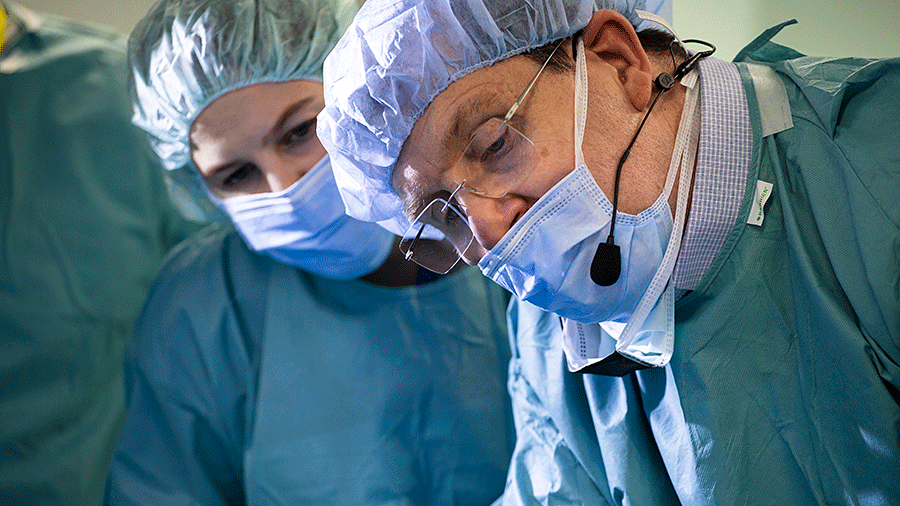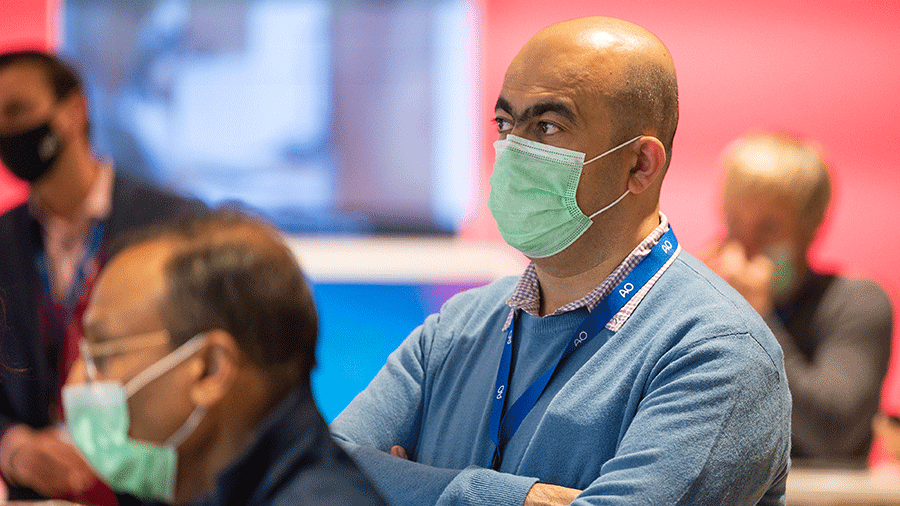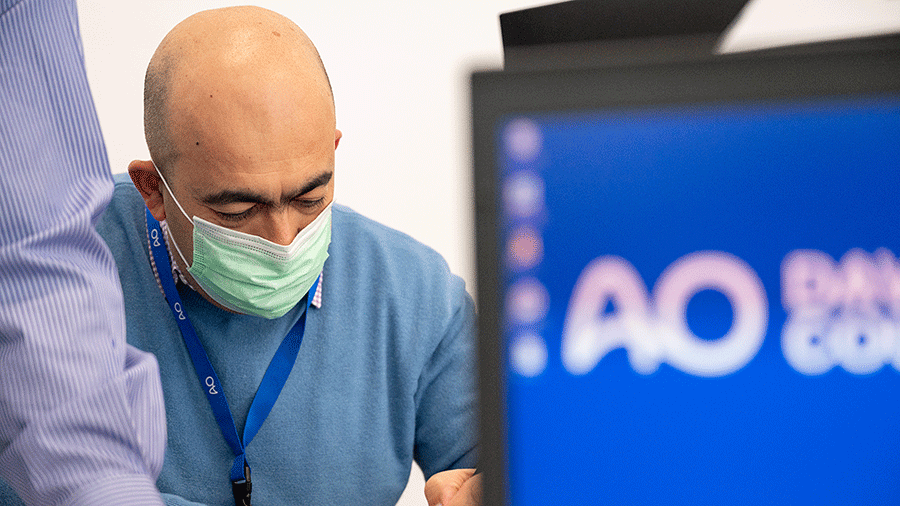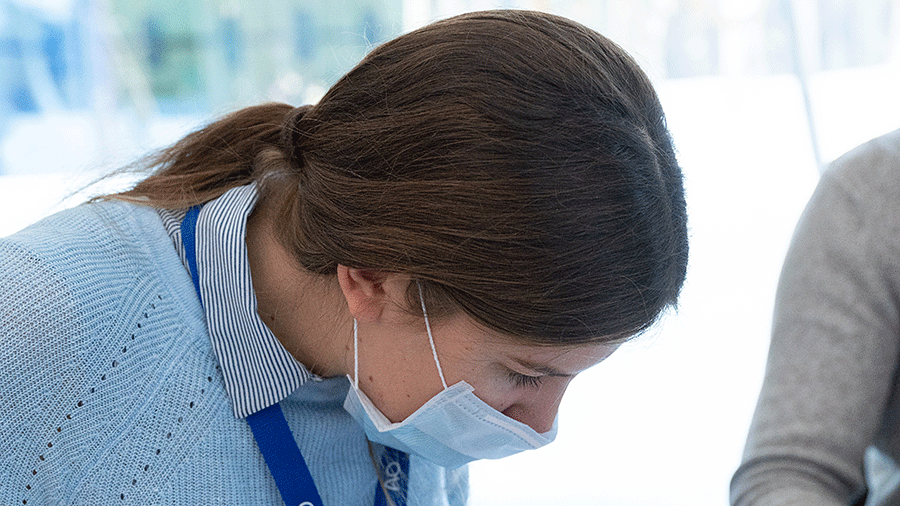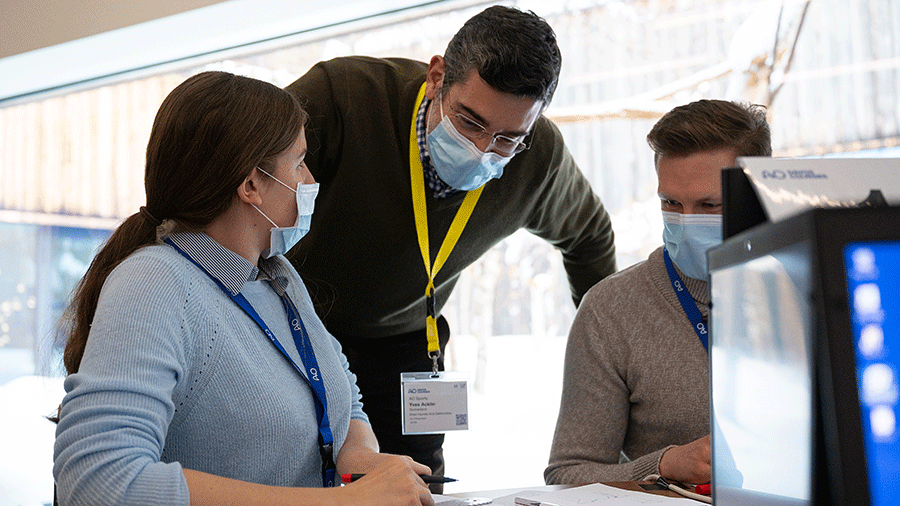‘The AO is the best of the best’: Highly interactive AO Sports knee course focuses on the knee as an organ
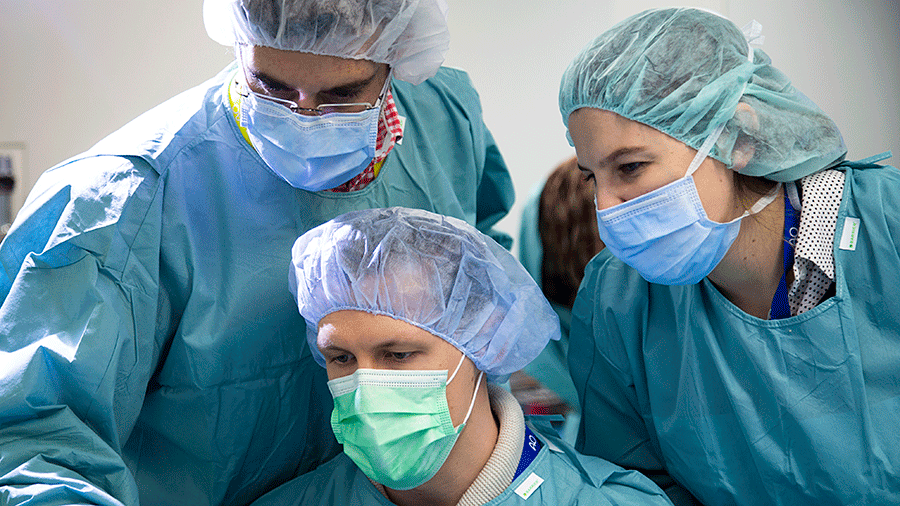
Nearly a year after its AO Davos Courses 2021 debut, AO Sports Advanced Course—Knee Injuries and Deformities faculty and participants are still talking about it as an unparalleled, gold-standard educational experience. That’s exactly what participants can expect at the 2022 course, scheduled October 13–15 at the Rimasys Cadlab Training Center in Cologne, Germany.
With more than 60 years of shaping the future of medical education and a worldwide network of expert trauma and reconstructive surgeons, the AO is well-positioned to respond to the significant global need for unbiased education in sports medicine. During the AO Sports Advanced Course—Knee Injuries and Deformities, AO master surgeons will lead participants through the core principles, demonstrate the latest techniques, and explore best practices in the management of a variety of knee disorders. The course will include case-based lectures, highly interactive sessions, and hands-on experience with cadaveric models.
“The knee should be understood as an organ, where specialized tissues (bone, cartilage, menisci, ligaments) should interact in perfect synchrony to promote function,” says course Chairperson Mauricio Kfuri, director of the orthopedic residency program at the University of Missouri (United States), where he holds the James P. Stannard, MD, and Carolyn A. Stannard Distinguished Professorship in Orthopaedic Surgery.
Kfuri explained that taking a leadership role in the delivery of sports medicine education is a natural for the AO, which is constantly evolving to better meet the needs of its global network. Today, that includes providing gold-standard education on the surgical treatment of sports injuries and other soft-tissue conditions around the joint; surgical treatment of these conditions is closely related to classic orthopedic and trauma surgery—two specialties for which AO surgeons’ expertise is renowned.
Upon completion of this course, participants should be able to:
-
Describe the surgical anatomy of the ligaments of the knee and its implication in the reconstructive procedures of those structures
-
Describe the rationale applied to the management of soft tissues injuries (menisci, ligaments, and cartilage
-
Explain the importance of lower extremity alignment while managing knee disorders based on comprehensive clinical and radiological assessment
-
Apply the principles of deformity correction to make a preoperative plan for osteotomies around the knee
-
Apply concepts of ligament reconstruction and deformity correction in the setting of a surgical skills lab.
Whether you’re a young physician just past residency or a seasoned surgeon looking to continue your lifelong learning trajectory, the two-and-a-half-day AO Sports Advanced Course—Knee Injuries and Deformities delivers the essentials and more: Using case-based lectures, highly interactive sessions, and hands-on experience with cadaveric models, master AO surgeons will lead participants through the core principles, demonstrate the latest techniques, and explore best practices in the management of a variety of knee disorders.
‘You never stop learning’
A career in surgery is a lifelong learning journey, according to orthopedic and trauma surgeon Yazan Hattar who, with 20 years of operating room experience, jumped at the chance to take part in the course at the AO’s flagship AO Davos Courses in December 2021.
“What I have learned in the AO is that this is a lifelong learning journey. You never stop learning, even if you become a faculty member, an officer, or even a chairperson,” said Hattar, who practices at Al Khalidi Hospital and Medical Center in Amman, Jordan, and is AO Trauma Jordan Chapter Education Officer, a member of the AO Trauma Middle East and Northern Africa Education (AO TMENA) Education Committee, and council member with the Jordanian Orthopedic Association. “On the contrary, I have learned a lot even on courses at which I was faculty. I attended this AO Sports course because I was confident that the AO was going to do it in a different way. The AO is the best in the of the best in delivering educational content, so I knew that this would be the best sports injuries course I could attend—and that was true.”
Interactivity sets AO courses apart from other continuing medical education events, Hattar explained, noting that the AO Sports Advanced Course—Knee Injuries and Deformities strikes an ideal balance between case-based lectures to deliver knowledge, discussions to enhance participants’ thinking, reflection to inspire change, and practical exercises to strengthen skills.
“Everywhere I go, I tell people about this knee course. I really appreciated the focus on the knee as an organ, as well as the module on alignment,” Hattar said. “The AO Sports Advanced Course—Knee Injuries and Deformities is an opportunity to learn about sports injuries—a very hot topic in orthopedics—from the best of the best: the AO.”
‘Learn from the AO masters’
Like Hattar, Anna Bartsch took part in the AO Sports course at the AO Davos Courses 2021—and left the event impressed with the open, engaging discussions among peers and experts and with great appreciation of the breadth and diversity of approaches to knee injuries and deformities expressed by both faculty members and participants.
“What was really special about this course with all of our interaction was the opportunity to talk openly and freely about experiences with treating knee injuries and deformities in different surgical teams. It was interesting to experience surgeons from around the world describing treatment of comparable diseases and discussing the similarities and differences of the different approaches. It was compelling to experience that there is no one-size-fits-all approach to surgery but that many paths may lead to successful treatment,” said Bartsch, a University Hospital Basel resident in orthopedics and traumatology. “Everyone was very open-minded and respectful. I sensed that participants felt really empowered to discuss their therapeutic approaches and experiences, even if they diverged from others. And we were very much supported by a refreshing diversity of opinions from excellent surgeons from around the world. It is rare to participate in a course with so much open-minded discussion and super constructive feedback from numerous sources.”
She also left the course with an abundance of practical insights.
“Even if we do our best, things may go wrong. I learned a lot about complications and pitfalls, how to avoid them, and how to deal with them when they occur despite our efforts,” she said. “It is really helpful to learn not only from my own mistakes but also from others. Such open discussion is really essential to improve patient outcomes. And I learned a lot of different approaches and new techniques to help improve surgical outcomes in general.”
In total, Bartsch considers the course a “must” for surgeons looking to take their knowledge and skills to the next level when it comes to managing traumatic and developmental disorders of the knee.
“The AO Sports Advanced Course—Knee Injuries and Deformities is a real chance for orthopedic surgeons to learn from the AO masters from around the world in order to continue improving our knowledge and skills,” she said. “I would even take this same course again in a couple of years just to stay updated on new developments in the field."


